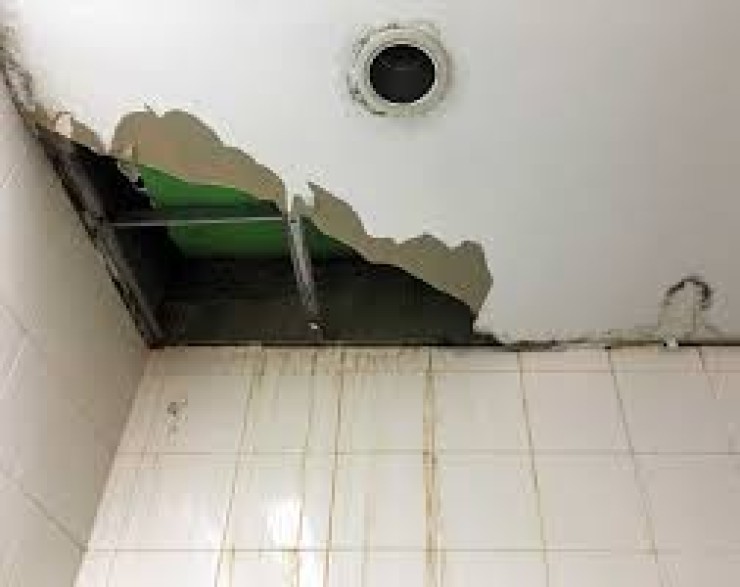Selecting the Right Paint: A Comparison of Plastic Paint and Royale Paint
When it comes to home improvement, selecting the right paint can significantly impact both the aesthetic and durability of your...

Water leakage can be a significant concern for both residential and commercial buildings. It can lead to structural damage, mold growth, and increased utility bills, all of which can have long-lasting consequences. Addressing water leakage effectively requires a proactive approach to identify the source of the problem and implement the right solutions. In this blog, we’ll explore the best water leakage solutions to protect your property from water damage.
1. Identify the Source of Leakage
The first step in addressing water leakage is to identify the source. Common sources of water leakage include:
• Roof Leaks: Damaged shingles, flashing, or wear and tear can allow water to seep in.
• Pipe Leaks: Corroded or broken pipes can lead to leaks within walls or under floors.
• Foundation Cracks: Water can infiltrate through cracks in the foundation, especially during heavy rainfall.
• Window and Door Seals: Poorly sealed windows and doors can let water in during storms.
• Basement and Crawl Space Issues: Poor drainage or flooding can cause moisture buildup in lower areas of a building.
Regular inspections can help catch these issues before they escalate.
2. Repairing Roof Leaks
For residential and commercial buildings alike, addressing roof leaks promptly is crucial. Here are some solutions:
• Regular Maintenance: Schedule periodic inspections and maintenance to catch issues early.
• Sealant Application: Apply waterproof sealants to flashing, seams, and other vulnerable areas to prevent leaks.
• Replace Damaged Shingles: Regularly check for and replace broken or missing shingles to maintain roof integrity.
3. Fixing Pipe Leaks
Leaky pipes can cause significant damage if not addressed quickly. Consider these solutions:
• Pipe Insulation: Insulating pipes can help prevent condensation and freezing, which can lead to leaks.
• Repair or Replace Damaged Pipes: Regularly inspect pipes for corrosion or wear and replace them as necessary.
• Use Leak Detectors: Installing smart leak detectors can alert you to leaks before they cause extensive damage.
4. Addressing Foundation Issues
Foundation cracks can allow water to seep into your home or building. Here are some effective solutions:
• Crack Sealing: Use epoxy or polyurethane sealants to fill cracks in the foundation.
• Improved Drainage: Ensure proper grading around the foundation to direct water away from the building.
• French Drains: Installing French drains can help manage water runoff and prevent water accumulation around the foundation.
5. Sealing Windows and Doors
Improperly sealed windows and doors can be a major source of water leakage. To improve sealing:
• Weatherstripping: Apply weatherstripping around windows and doors to create a tight seal.
• Caulking: Use silicone or latex caulk to fill gaps and cracks around windows and doors.
• Window Well Covers: For basements, installing window well covers can prevent water accumulation during heavy rains.
6. Managing Basement and Crawl Space Moisture
Basements and crawl spaces are prone to water issues, so proactive measures are essential:
• Dehumidifiers: Use dehumidifiers to reduce moisture levels in basements and crawl spaces.
• Sump Pumps: Installing a sump pump can help manage water accumulation and prevent flooding.
• Vapor Barriers: Installing vapor barriers on walls and floors can help prevent moisture from seeping into the space.
7. Utilizing Water-Resistant Materials
In areas prone to water exposure, consider using water-resistant materials:
• Waterproof Paints: Use waterproof paints for interior and exterior walls to create a barrier against moisture.
• Water-Resistant Flooring: Choose materials like vinyl, tile, or treated wood that can withstand moisture.
• Mold-Resistant Drywall: In areas like bathrooms and kitchens, use mold-resistant drywall to prevent mold growth.
8. Regular Inspections and Maintenance
Preventative measures can save you from costly repairs down the line. Schedule regular inspections to:
• Check for Signs of Moisture: Look for discoloration, peeling paint, or mold growth.
• Inspect Roof and Gutters: Ensure that your roof and gutters are in good condition and free of debris.
• Maintain Landscaping: Ensure that plants and landscaping are designed to direct water away from the building.
Conclusion
Water leakage can lead to significant issues for both residential and commercial buildings if not addressed promptly. By identifying the source of leaks, implementing effective repair solutions, and maintaining your property, you can protect your investment from water damage. Whether it’s fixing roof leaks, sealing windows, or managing basement moisture, being proactive is key to maintaining a safe and dry environment. Don’t wait for a small leak to turn into a major problem—take action today to safeguard your property!
Water leakage can be a significant concern for both residential and commercial buildings
Post Your Comments